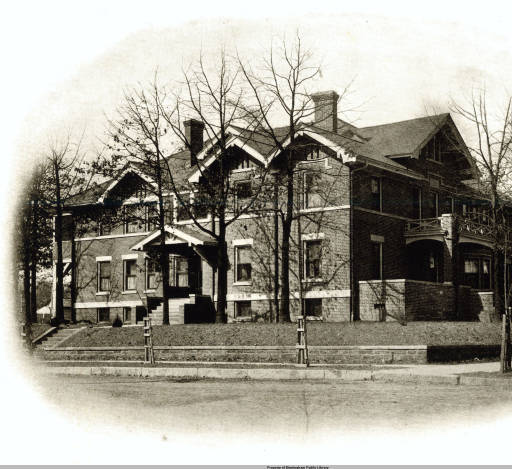If they survive, all sorts of ephemeral materials from the past can be of
interest to historians, genealogists, entrepreneurs, and even the rest of us.
Whether its pulp magazines, baseball cards, advertising flyers or directories
of all types, these products can tell us something about the people who
produced and used them, are listed in them and the time in which they were
created.
Three such items related to Birmingham I’d like to examine in this post: Fred W. Green’s The Birmingham Church Directory published by the Dispatch
Stationary Company in 1896; R.W A.
Wilda’s Birmingham, Alabama: Facts Worth Knowing published by the Caldwell
Printing Company in September, 1889; and the 1920 telephone yellow pages for
the city. The church directory and the telephone book were found online at
Birmingham Public Library’s Digital Collections. The Wilda pamphlet came from
the Library of Congress via Google Books.
The church directory is 80
pages long and covers various Christian denominations around the city: Baptist,
Christian, Catholic, Episcopal, Methodist and the largest number,
Presbyterians. One Hebrew congregation is also given. Near the end is a listing
of the sixteen church locations. The listings include histories of the churches
and current members. South Side Baptist, for instance, has over seven
two-column pages of members.
Wilda, a native of Germany, was co-owner of a real estate firm; and his
booklet is one of many issued in the city’s early days to attract investment. He
includes information on Birmingham streets, water works, sewers, schools,
street car lines, banks, main industries and railroads. Information on black
institutions in categories such as churches and schools is included. A listing
of “Buildings” street by street is useful to us in establishing what existed at
the time of publication. For instance, we learn that the Caldwell Hotel was
located on the corner of First Avenue and 22nd Street.
The telephone yellow pages are a veritable snapshot of the city in 1920. The
44 pages offer categories for everything from Abstractors to X-Ray Supplies. In
between are numerous doctors, lawyers, produce merchants and over
two-and-a-half pages of grocers. Thirteen theaters are listed; the Lyric is the
only one still surviving. Only one power company is listed; you guessed it,
Alabama Power Company. The directory also includes such categories as Bath
Houses, Billiard Halls and something called Ladies Toggery—as in clothing.
A fascinating aspect of the 1920 yellow pages is the lack of segregation, as the listing for “Doctors” demonstrates. Scattered among the mostly white ones are some of the city’s early black physicians. Arthur McKinnon Brown, Logwood Ulysses Goin and Ulysses Grant Mason apparently had the same office at 310 North 18th Street at this time. Brown and Goin had the same phone number, Main 503, but Mason’s was Main 2. Also listed is an early female physician, Annie M. Robinson. Although several women had practiced medicine in Birmingham in the 1890s and very early 20th century, she may have been the only one in 1920.
Near the end of the telephone directory is a table giving “Long Distance Rates from Birmingham.” Most of the cities listed are in Alabama, but a few such as Washington, D.C., and Pensacola are included for comparison. The table notes that rates for over 70,000 locations are available from the long distance operator. Two basic types of calls were station-to-station, which meant the caller would talk with anyone who answered, or person-to-person. Such calls to Hartselle, for instance, would cost 50 cents and 60 cents respectively for the “initial period”, which the table does not define.
Publication of the two
directories was supported by advertising from many local merchants scattered
across lots of pages. Southside grocer J.E. Minter placed a large ad just after
the title page in the church directory. Bodeker’s National Detective Agency had
a full page ad in the telephone directory, which tells us that their main
office in Alabama was located in the Brown-Marx building and branch offices in
the state in Mobile and Montgomery. The Wilda pamphlet is “Compliments of the
Bankers of Birmingham.”
These publications offer
us the names of numerous individuals and their relationships with businesses
and institutions. The advertisements, tables, and lists tell us much about the
way life was lived in the city at the moment of publication. We can look at
them now with a sense of wonder at not only how much has changed, but how much
remains the same all these decades later.
This piece originally appeared on the DiscoverBirmingham.org site in December 2013.





































